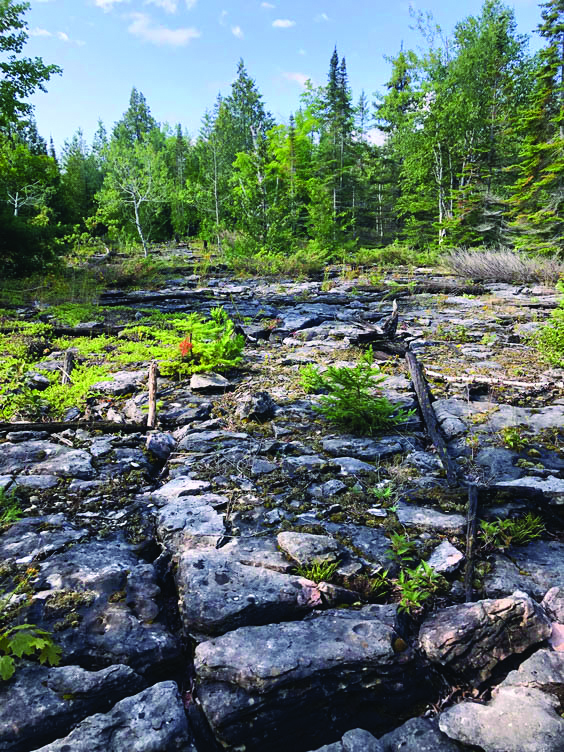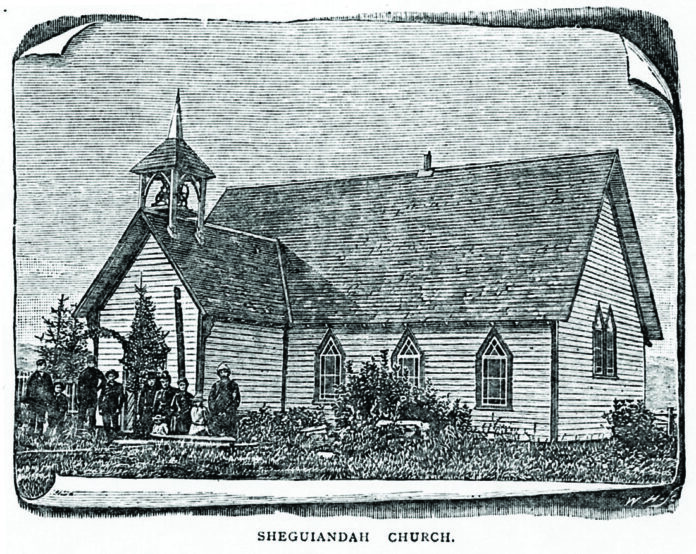WIARTON—Midwestern Ontario is home to some of the Great Lakes region’s most important biodiversity hot spots, supporting an exceptional abundance of species and habitats and on Earth Day, April 22, additional hectares of thriving forest and alvars have been protected forever. The Nature Conservancy of Canada (NCC) announced the protection of two new nature preserves to mark Earth Day: Sturgeon Bay Forest, located on the Saugeen (Bruce) Peninsula near Wiarton, and an additional 40-hectare property added to existing conservation lands on Cockburn Island.
The additional 40 hectares protected on Cockburn Island contain alvars, an unusual habitat type characterized by shallow soils and areas of exposed bedrock that supports several species thought to have originated when the climate was warmer and drier than today. Several species at risk have been documented there, including Hill’s thistle. The property also contains pockets of diverse forest communities.
The 65-hectare Sturgeon Bay Forest features expansive, intact forests that provide habitat for many species and support biodiversity. These forests also provide important ecosystem services for nearby communities, such as cleaning air and filtering water, while storing carbon within their trees, roots, soils and wetlands, and helping to slow the pace of climate change. The deciduous, mixed and coniferous forests at this site provide high-quality habitat for wide-ranging species, such as American black bear.
“It is truly a pleasure to work alongside many conservation-minded individuals, governments, and organizations to protect some of our most important natural spaces on the Saugeen Peninsula and Cockburn Islands for both nature and people,” said Esme Batten, program director, midwestern Ontario NCC. “The Saugeen Peninsula is world-renowned for the diversity it supports, and the forest at Sturgeon Bay Forests are no exception, providing habitat for wide-ranging mammals, such as American black bear, and habitat for breeding and migratory birds along the Niagara Escarpment. Building upon the network of existing conservation lands on Cockburn Island ensures the long-term protection of sensitive alvar habitats and the species they support, while also cleaning our air and water to ensure people continue to thrive. These conservation efforts bolster existing networks of protected lands and help build healthy and resilient ecosystems.”
“On Earth Day, and every day, our government supports initiatives that protect biodiversity and help fight climate change at the same time,” said Steven Guilbeault, minister of environment and climate change. “The NCC’s work to secure Sturgeon Bay Forest is another step in sustaining the vital ecosystems in the Great Lakes region. This nature reserve provides a home for many species, including migratory birds, as well as helping to store carbon and filter water for nearby communities. By making investments such as this through the Nature Smart Climate Solutions Fund, we continue to build a more sustainable, healthy future for ourselves, our children and our grandchildren.”
Brent St. Denis, clerk/treasurer for Cockburn Island told The Expositor, “we have a good working relationship with NCC. We are aware they continue to assemble property on the Island and we continue to have a good partnership with NCC. We consider ourselves the conservation island,” he said, noting NCC has acquired over half of the land on Cockburn Island.
The protection of Sturgeon Bay Forest and the additional 40 hectares on Cockburn Island are the latest in NCC’s land conservation efforts in the Saugeen (Bruce) Peninsula and Manitoulin Island Archipelago natural areas. Together with its partners, NCC has protected over 35,000 hectares of ecologically significant land in the two regions.
“I am thrilled to see the continued success of the Greenlands Conservation Partnership program in protecting important natural habitats like the ones here at the Saugeen Peninsula and Cockburn Island. The nearly 260 acres of newly conserved land, equivalent to more than 146 soccer fields, is a win for the region and for our province’s biodiversity. It’s crucially important that projects like this continue, and that’s why our government is investing $20 million in the Greenlands program over the next four years,” said Andrea Khanjin, minister of the environment, conservation and parks. “Together with partners like the NCC this program will help ensure the long-term health and sustainability of our natural environment.”





